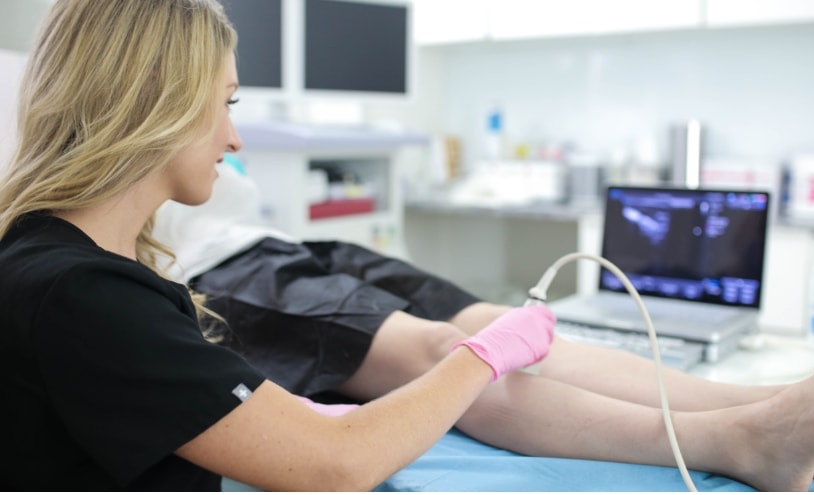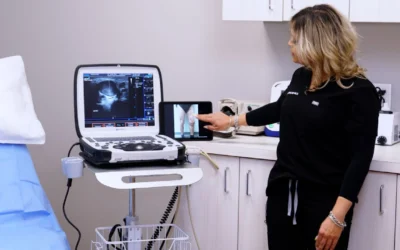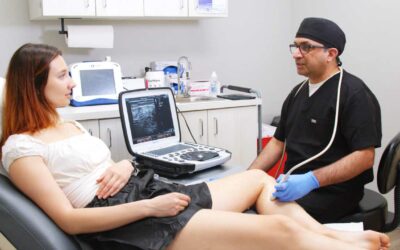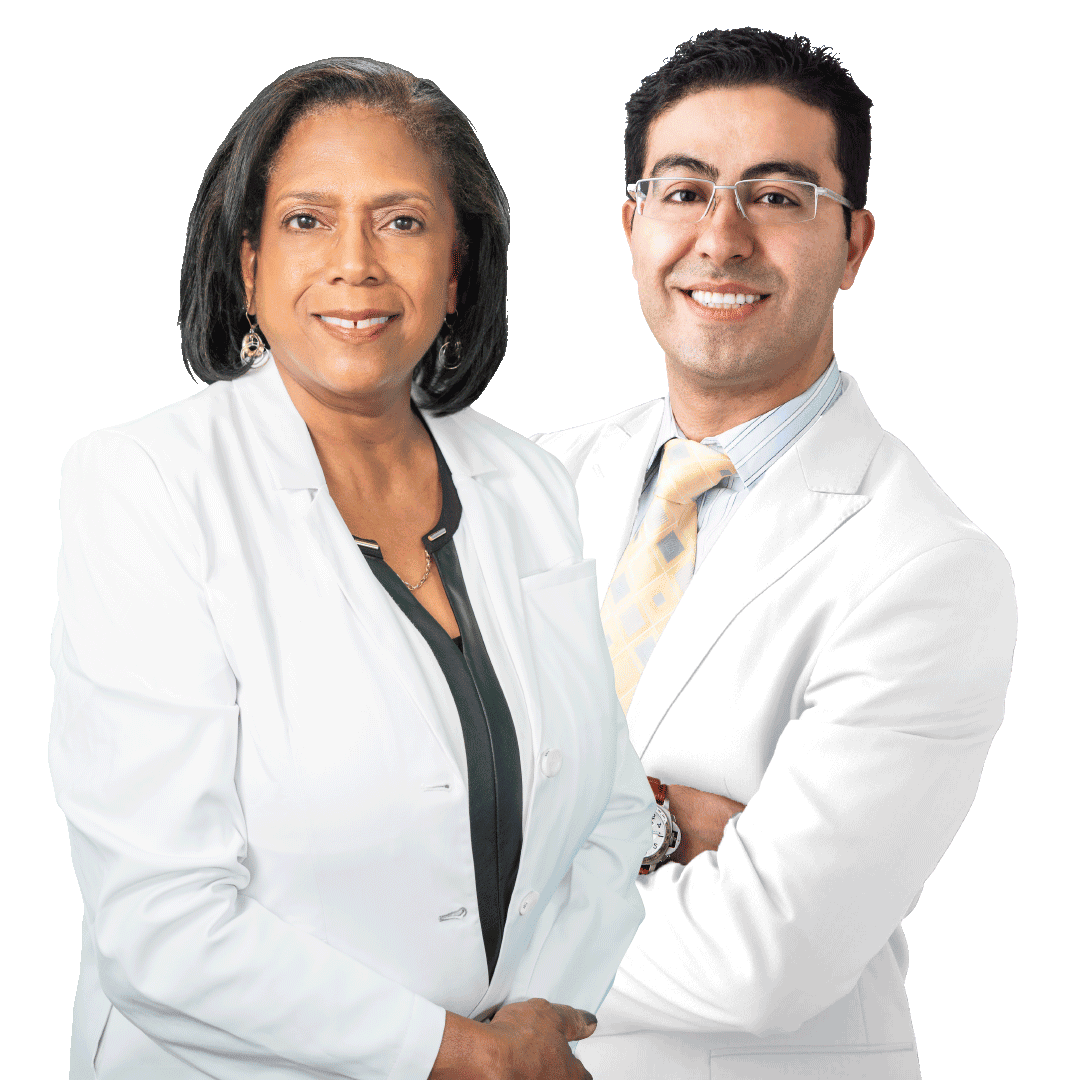Top Maryland Vein Doctors
What Doctor Treats Varicose Veins? And Other Varicose Vein FAQs
What doctor treats varicose veins?
The medical terminology for a doctor who treats varicose veins is phlebologist. Phlebology is the branch of medicine concerned with the prevention, diagnosis, and treatment of spider veins, varicose veins, and other vascular conditions. Doctors who specialize in phlebology are known as phlebologists, but you can also call them vein doctors, vein specialists, vein experts, and vein physicians. When looking for a phlebologist, you should ideally look for vein doctors with specialized training in vascular imaging and minimally invasive vein treatments.
Vein doctors can come from all fields of medicine, such as dermatology, cardiology, anesthesiology, and more. To become a phlebologist, physicians must pass a few simple tests and undergo specialized training. But the barrier to entry into phlebology is pretty low, so vein treatments are offered by a lot of inexperienced vein doctors with minimal expertise in vein care. Seeking vein treatments from inexperienced vein doctors can lead to a high risk of vein disease recurrence. That’s why you must find vein doctors with specialized training in vein care.
Maryland Vein Treatment individually selects the country’s leading vein experts from the best residency programs and fellowships. We only accept vein doctors with specialized training in minimally invasive spider vein and varicose vein treatments. Furthermore, our vein doctors undergo a board certification process to establish themselves as the country’s top 1% of vein doctors. If you’re looking for highly-skilled and talented vein doctors, you should look for board-certified vascular surgeons in Maryland.
You can find our board-certified vein doctors at 10215 Fernwood Rd, Suite 301, Bethesda, Maryland. If you’re in or around the DC Metro Area, you can find our vein doctors just outside Washington, DC, in Silver Spring. Please schedule an appointment to explore your vein treatments in Maryland.
What causes varicose veins?
Varicose veins are dense and puffy blood vessels that bulge out of the skin’s surface, looking like a mass of twisted, tangled, and knotted ropes. They usually protrude outwards because of the accumulation of excess blood. Varicose veins are formed when an unusually high volume of blood accumulates in the leg veins, which happens because of chronic venous insufficiency, the circulatory disorder responsible for most vascular conditions and disorders.
Chronic venous insufficiency is a medical condition caused by the collapse of vein valves. In healthy veins, the valves act as one-way doors to ensure optimal blood flow to the heart against the force of gravity. When your vein valves collapse or malfunction, blood flows backward and accumulates in the leg veins, eventually leading to vascular dilation, increased blood pressure, and the formation of spider veins and varicose veins.
What’s the difference between varicose veins and spider veins?
People are often confused about the difference between varicose veins and spider veins. Most people use the terms varicose veins and spider veins interchangeably, even though there are some important distinctions.
Spider veins are dense clusters of thin blood vessels that appear just underneath the skin’s surface. Varicose veins are dense and puffy blood vessels that bulge out of the skin’s surface in a twisted, tangled, and knotted form. Spider veins are usually considerably thinner than varicose veins, so they don’t bulge out of the skin’s surface. But varicose veins always bulge outwards. Both spider veins and varicose veins are essentially dilated or damaged blood vessels with excess blood, but varicose veins are thicker, larger, and more dangerous.

We know health insurance is confusing so we will help you check if you’re covered:
FREE Coverage Checker:
What does it mean if veins are popping out on my legs?
If leg veins are popping out on your legs, you probably have varicose veins. Your veins shouldn’t pop out of your skin’s surface — they should remain underneath the surface. If your leg veins are bulging out on your legs, especially in a twisted and tangled form, you need to consult a vein doctor to explore your varicose vein treatments in Maryland.
Can I get varicose veins in my neck?
Varicose veins usually appear on the lower extremities of the body, such as the legs, but you can also get them in other parts of the body. It is technically possible to get varicose veins in the legs, but the likelihood is extremely low.
Varicose veins usually appear on the legs because gravity forces blood to flow backward and accumulate in the leg veins, especially if your vein valves are weak. The veins in the legs must carry blood up to the heart, moving against the force of gravity. So, the collapse of vein valves can lead to backward blood circulation. However, the veins in the neck must carry blood down to the heart, moving with (not against) the force of gravity, so the risk of varicose veins in the neck is negligible.

Visit Our Maryland Vein Treatment Center
How to take care of veins?
The best way to take care of veins is to engage in activities that improve blood circulation and strengthen your vein valves. The following lifestyle changes can improve your vascular health:
- Wear compression stockings regularly
- Engage in cardiovascular activities, such as running, swimming, and cycling
- Elevate your legs above your heart’s level while sitting down
- Prop your legs up on some pillows while sleeping
- Don’t sit or stand still for long periods
- Ensure 5 minutes of activities every hour
- Drink lots of water
- Eat lots of fibrous foods and vegetables
The aforementioned lifestyle changes won’t definitively prevent spider veins and varicose veins, but they’ll minimize the risk of vein disease. If you notice the signs and symptoms of vein disease, such as leg heaviness, leg swelling, restless leg syndrome, frequent leg cramps, spider veins, and varicose veins, please schedule an appointment at our medical center for vein treatment in Maryland.



